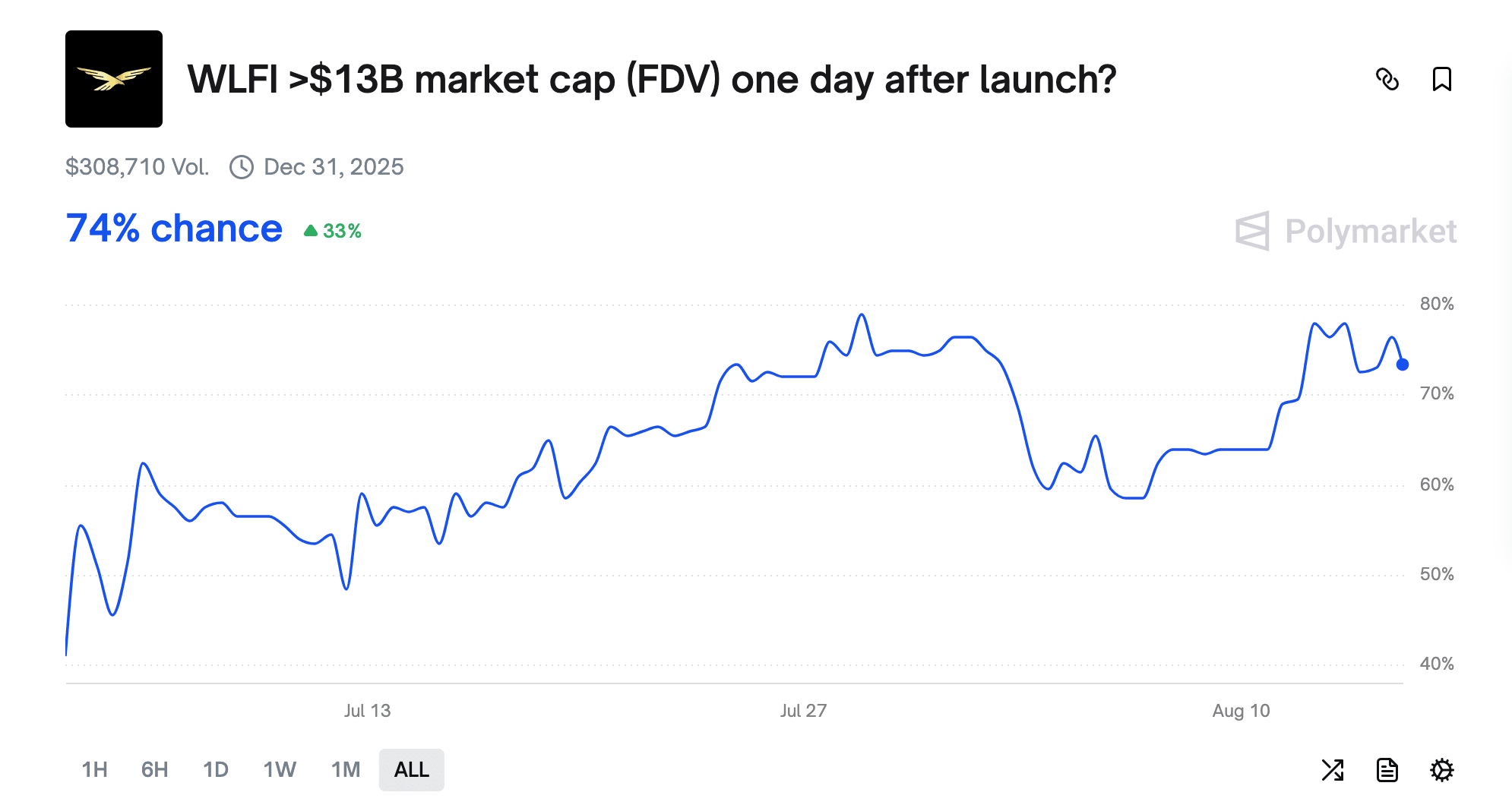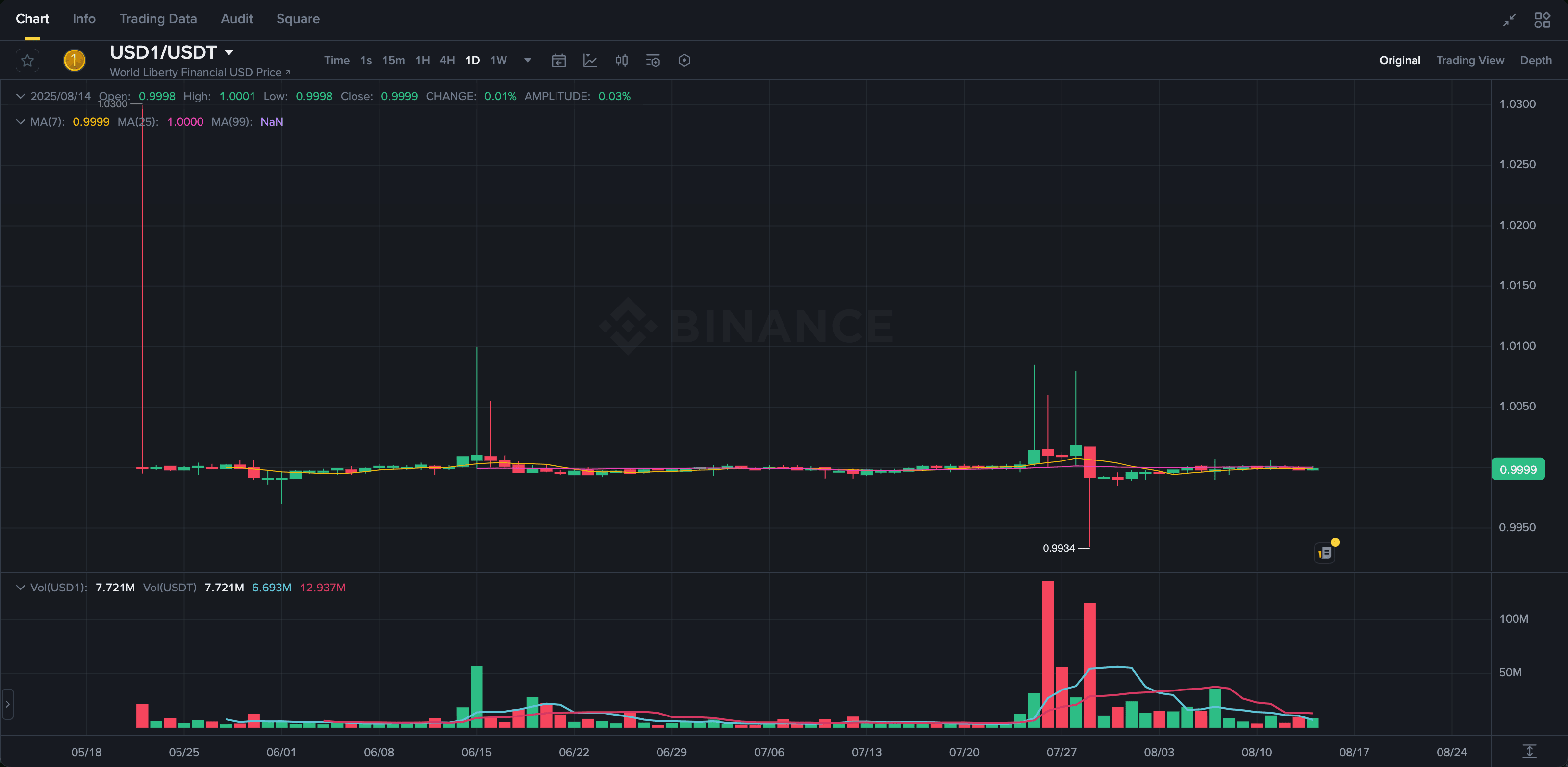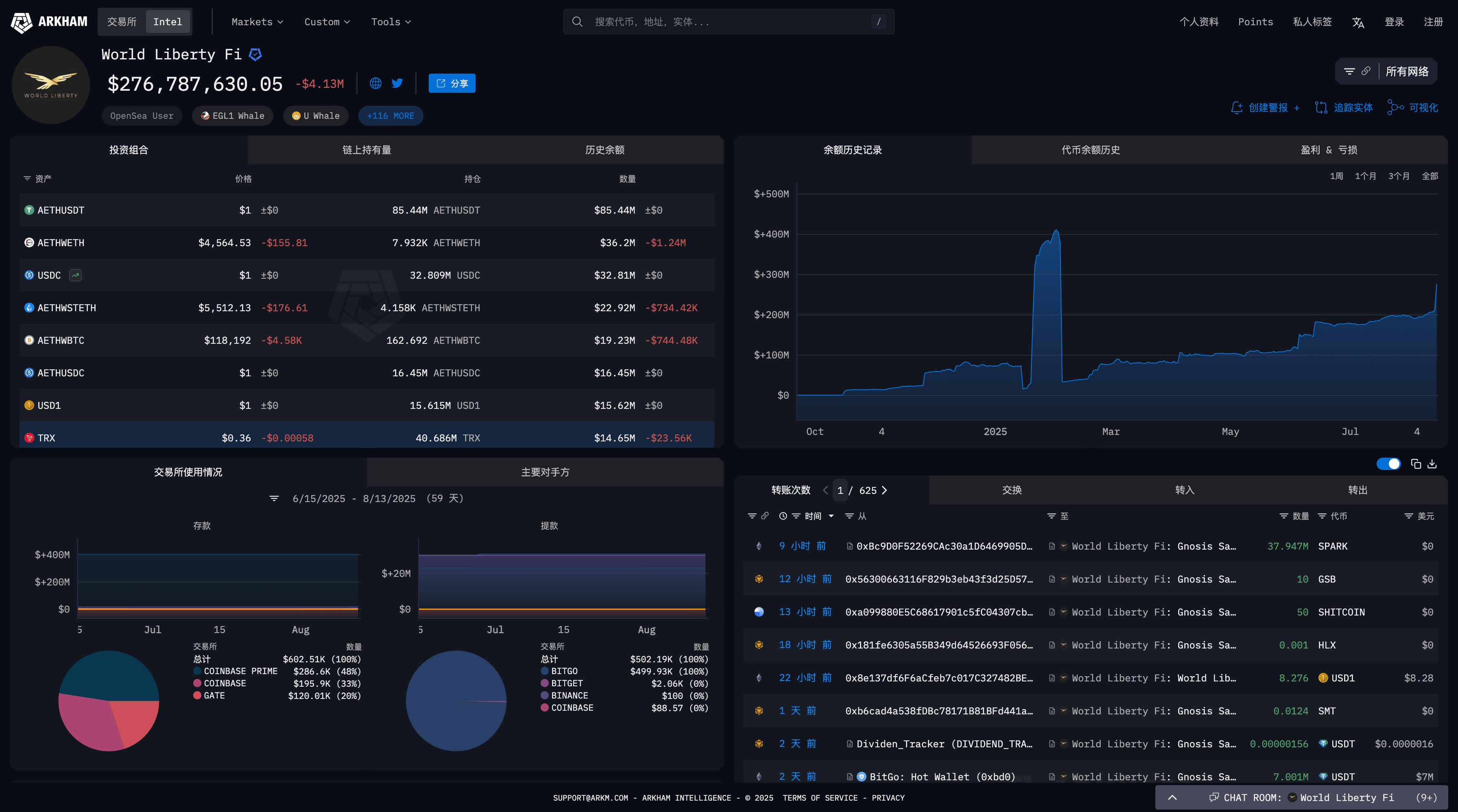Original title: (As WLFI approaches trading opening, a comprehensive understanding of the ecological status and valuation composition)
Original Author: Ethan, Odaily Planet Daily
The crypto market is about to welcome a new variable that deserves close attention.
World Liberty Financial (WLFI) officially stated on X that the goal is to open token trading by the end of August.
As an unprecedented 'political narrative + financial engineering' combination experiment, WLFI has been the focus of American crypto capital and market imagination since the second half of 2024. Now, with the team fully locked, public offerings being unlocked in batches, and TGE approaching, we need to reorganize the current valuation logic of this project, its on-chain performance of stablecoin USD1, and WLFI's capital actions and layouts in external ecosystems.
Comprehensively considering these signals, the next phase of WLFI may not just be a 'tradeable governance token', but a 'crypto-political structure' benchmarked against TRUMP, mimicking the MSTR model, and binding USD1 across multiple chains.
How to anchor valuation: ALT 5, Sun Yuchen, DWF Labs, and multi-round price games.
In October 2024, WLFI launched the first round of public offerings at a price of $0.015, raising a total of $300 million; on the day of Trump's inauguration in January 2025, the second round was launched with a price increase to $0.05, raising another $250 million. These two rounds attracted over 150,000 users, covering multiple markets including North America, Asia, and Europe, becoming one of the hottest initial fundraising rounds from the end of 2024 to the beginning of 2025.
The project party adopted a strategy of 'freezing circulation, betting on the future' during the financing stage, setting tokens as non-tradeable and limited to governance participation during fundraising. While this mechanism faced market skepticism at one point, subsequent market performance effectively filtered speculative positions, forming a more cohesive community structure. Until the community governance proposal was officially passed on July 17 this year, followed by an official announcement on the 19th that TGE may be launched around the end of August. (This time is an estimate, not a specific time; the original text states that the fastest completion would be 6-8 weeks from the date of the announcement.)

According to official statements and on-chain data, only early public offering shares will be partially unlocked; the core team, advisors, and strategic investors are all locked, and the future unlocking rhythm will be decided by community voting.

On this basis, reviewing the over-the-counter trading data since July shows that WLFI's trading price fluctuates between $0.8 and $1 (source: LBank Pre-Market data), and the probability of 'TGE post-FDV exceeding $13 billion' on the prediction market Polymarket is as high as 74% (data from August 14); if compared with this FDV level, first-round investors' returns may exceed 867%.

According to public information, DWF Labs, Web 3 Port, Aqua 1 Fund, etc. have made large purchases in the strategic round. Among them, Sun Yuchen purchased 300 million WLFI through Tron DAO at a low price last November, with a cost even lower than that of the public round at $0.015, becoming one of the largest independent holders currently. The entry of these capitals not only enhances WLFI's institutional credibility but also sets the 'foundation for games' for the market performance after subsequent token unlocks.

And this originally 'unlisted' governance token, after ALT 5 Sigma's strategic allocation, obtained the first off-chain valuation anchor point of $0.20. According to the trading structure, ALT 5 will issue 200 million new shares, half of which will be directly used for token exchanges with the WLFI project party, calculating at a valuation of $15 billion, clearly establishing each WLFI's book valuation at $0.2.
More importantly, this round of transactions binds more political and capital signals. ALT 5 is not only a capital injection party but also an important part of WLFI's governance structure, with Trump family member Eric Trump, WLFI CEO Zach Witkoff, COO Zak Folkman, and others joining the ALT 5 board, which also plans to include WLFI in its encrypted treasury assets to build a new capital model for 'decentralized company reserves'.
It can be said that ALT 5's move not only provides a valuation anchor for WLFI but also establishes it as a 'political capital anchor point' in the Web 3 world.
Stablecoin USD1: From on-chain de-peg testing to points program rollout.
USD1, which is highly bound to WLFI, is also rapidly evolving.
USD1 is WLFI's core tool in the stablecoin market, structured to be pegged 1:1 to the US dollar, with reserves consisting of US short-term Treasury bonds and US dollar cash, held by BitGo Trust Company. This model is similar to USDC but leans more towards centralized platform integration and off-chain resource injection in market expansion strategy. Since its official launch in March this year, USD1 has rapidly opened up the market due to its fiat reserve backing, BitGo custody, security audit certification, and resources behind the Trump family, breaking a circulation market cap of $2.1 billion in just two months, becoming the fastest-growing 'latecomer' in the current stablecoin landscape.

On-chain distribution shows that USD1 mainly focuses on the BNB Chain, with about 90% of token circulation occurring on this chain, while also completing compatibility deployment with Ethereum and Polygon through Chainlink CCIP, and has been listed in trading pairs on platforms such as Binance, HTX, and MEXC, achieving functions such as staking, lending, and exchange through protocols like ListaDAO, StakeStone, and Falcon Finance.
However, the accompanying high-frequency use has also exposed potential vulnerabilities in liquidity. On July 29, after the IKA Launchpad event on the Gate platform, USD1 faced a brief de-peg due to a concentrated redemption of $200 million, with prices dropping to 0.9934 USDT at one point. This sell-off pressure caused by concentrated user redemptions was seen as a passive stress test for USD1 in the real market environment.

Fortunately, the price later stabilized at 0.9984 and did not spiral out of control. On August 7, the project party also released the USD1 Points Program, which clearly states that it will provide users with point incentives through trading, holding, and staking behaviors, launching simultaneously with multiple mainstream exchanges like OKX, and plans to further integrate into the WLFI App and on-chain native DeFi projects to solidify the user stickiness and application layer of the stablecoin.
However, from the perspective of the on-chain ecosystem, the situation does not look optimistic. Currently, the trading volume of USD1 within the Binance ecosystem is limited, and previously meme coins such as BUILDon, usd1doge, and wlfidoge saw varying degrees of price increases before disappearing without a lasting impact or 'leader effect'. Whether it can continue to thrive on-chain in the future may still require waiting for the specific details of the points program.
However, this cannot affect one fact: USD1 is no longer just 'WLFI's subsidiary stablecoin', but is gradually becoming the on-chain pricing unit and funding intermediary for the Trump narrative.
Ecological expansion: multi-round foreign investment and asset acquisition under the treasury strategy.
Compared to 'telling stories', WLFI understands better how to 'buy annotations with money'. The WLFI project has emphasized the 'encrypted treasury model' from start to finish, adopting a multi-dimensional expansion strategy in practice.
In the first half of 2025, WLFI successively invested in or announced investments in the following projects:
· Strategic investment of $10 million in Falcon Finance, with USD1 becoming its official collateral asset;
· Committed to investing $6 million in Vaulta (formerly EOS) to promote the landing of its Web3 banking module in the US;
· Purchased $6 million Vaulta A and EOS through DEXs like Pancake and exSat;
· Actively purchased mainstream crypto assets such as LINK, TRX, AAVE, SEI, AVAX, MNT, ENA, ONDO, MOVE, with total expenditures exceeding $40 million.

Some assets (such as TRX, LINK, AAVE) are incorporated into WLFI's strategic treasury asset reserves to support stablecoin issuance and financial tool construction.
An even more important step is WLFI's capital reverse input to ALT 5. The project party obtained board seats at ALT 5 through a token exchange model and pushed its crypto asset management business to restructure around WLFI. This approach serves both as a valuation anchoring tool and as a signal for community governance.
According to co-founder Zak Folkman, three US listed companies have expressed willingness to consider including WLFI in their asset reserves. He pointed out: 'We are trying to replicate Michael Saylor's path, but we are taking a stablecoin-led channel.'
It is worth noting that most of these investments revolve around the actual circulation and payment scenarios of USD1, directly consolidating its position as a stablecoin intermediary.
The encrypted experiment of political capital is still ongoing.
From the 'non-tradeable' governance setting to the high expectations for TGE, from the rapid increase in stablecoin USD1 to the capital layout of ecological wide-net, from investors like Sun Yuchen, DWF Labs, Aqua Fund to users betting on its FDV exceeding $13 billion on Polymarket... The underlying logic of this series of actions is clear:
WLFI is trying to convert political brand power into crypto financial traffic and build a complete closed loop from treasury mechanisms, stablecoin issuance, scenario construction to community governance.
In the short term, the market will still engage in games around TGE, unlocking ratios, exchange launches, and other nodes; in the long term, whether this 'crypto experiment coming from Trump' can continue to gain market trust and withstand extreme volatility will depend on whether it can truly achieve a high coupling of political narrative and financial engineering.
The ecosystem built by WLFI is clearly not a single DeFi project, but a 'situational expression' of an embedded political capital mechanism in the Web 3 world. Behind it, there is not only the personal brand traffic of the Trump family but also the transformation of the new US government's attitude toward the crypto industry as a macro background (such as the GENIUS Act, etc.). Therefore, WLFI is not building a pure on-chain model like 'anonymous community governance', but rather constructing a governance experimental field that spans chains and sectors.
If Polygon is the Web 3 model of the Indian political-business technological conspiracy, then WLFI is an integrated rehearsal of 'American crypto nationalism'.
However, risks must also be noted: extreme uneven circulation of tokens (large holders are highly concentrated); the project party has intensive actions in strategic investments, with significant asset risk exposure; stablecoin USD1 is still in the early development stage on-chain and has not yet passed the test of large-cap stability; while political labels can attract attention, they may also amplify regulatory pressure.
Whether WLFI can truly break through mere political traffic and establish financial inertia in the future still depends on two core paths: first, whether USD1 can genuinely form an on-chain mainstream payment and settlement network; second, whether the market circulation mechanism after TGE is stable and sustainable.
Conclusion: WLFI is destined to be more than just a token.
World Liberty Financial is currently at a triple dividend point where policy shift, narrative transformation, and market recovery intersect. It bears the expectation of 'transforming American political influence into on-chain order', while also facing the question of how 'decentralized governance' can be taken over by real capital.
Will WLFI become the next TRUMP? Can it mimic MSTR to become the paradigm of corporate treasury crypto-ization? Can it break the curse of 'political crypto = emotional market value' and ultimately achieve a long cycle with financial compound capabilities?
Whether one believes it or not, the era of WLFI is being pressed to start.
Original link



